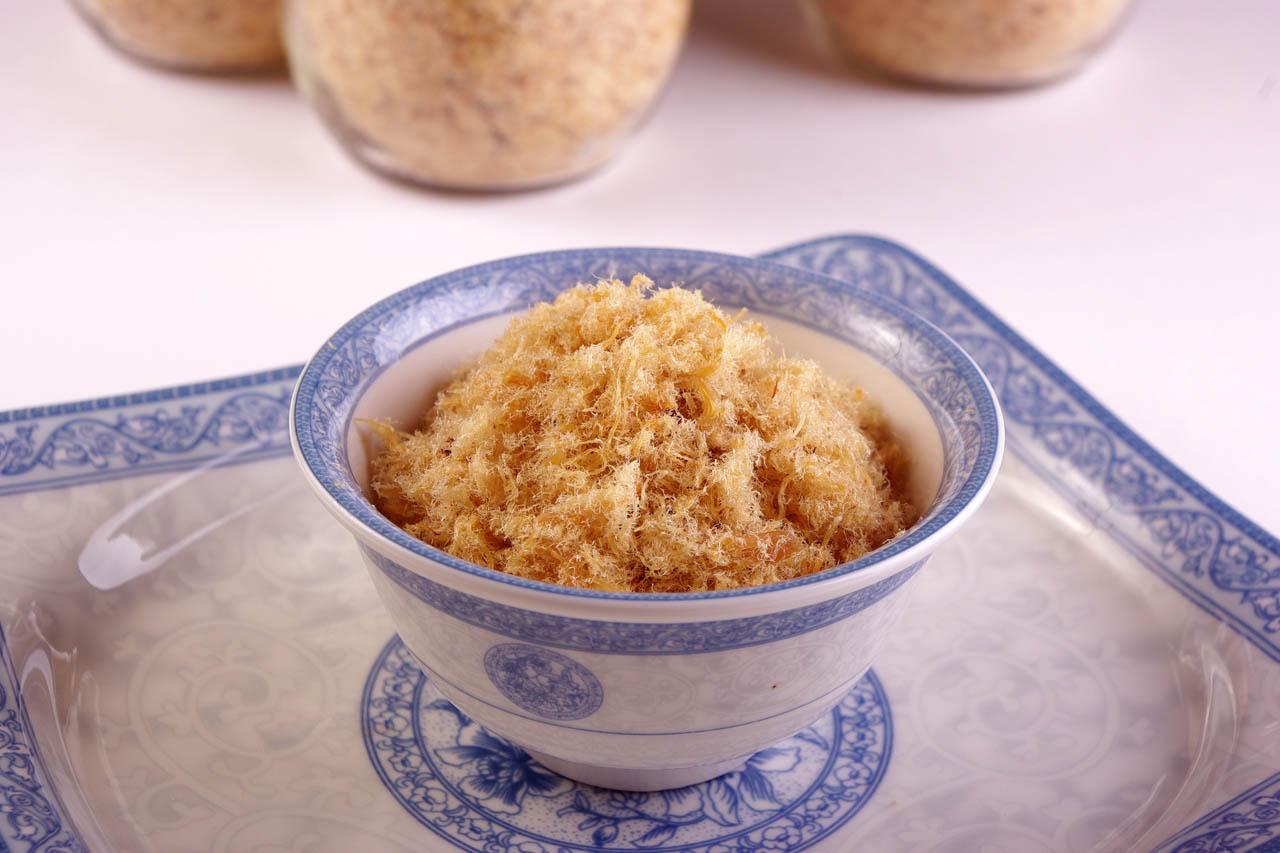
The fluffy, sandy and salty-sweet airiness of Chinese pork floss (or rousong) makes for a fascinating confection. Texture-wise, pork floss carries tantalizing hints of carnival nostalgia, with a candy-floss gossamer and sweet, meaty undertones of a really good jerky.
Although meat floss can be made with other ingredients — such as beef, chicken, fish or even vegetables for variety and religious reasons — and is used in cuisines across China, Vietnam, Singapore, Malaysia and Indonesia, the type of product that you’ll see most often in Canada is the crispy pork variety.
Buying and storing pork floss
A golden-hued collection of very thin threads, pork floss can also clump slightly in small tufts, resembling light brown sugar. Sold in large Asian supermarkets and some big box grocery chains, pork floss comes in two varieties: pork sung (rousong in Chinese) and pork fu, which are relatively interchangeable, and can sometimes be found with additional flavourings such as seaweed or chilis. Since it is a dried product, pork floss is relatively shelf-stable and easily stored in its big plastic jar for maximum freshness. Most varieties in North America are also inexpensive, with a large jar often sold for around (or well under) $10.
How to use pork floss
Once you’ve bought your pork floss home, there are a wide variety of applications for this versatile ingredient. Here are some traditional and unconventional ways to use pork floss on your plate.

Pair it by texture
Some pork floss connoisseurs enjoy snacking on it plain to best enjoy the meltingly soft, crisp interplay of textures with each bite. Much of the point of pork floss is that ephemeral crispness that dissolves in the mouth, so it’s probably not advised to get it wet too soon. Adding too much liquid or combining it with ingredients too far ahead of time transforms pork floss from fluffy and loveable to a soggy, lumpy mess and is best avoided.
Try it at home: Pork floss plays very well with mayonnaise and egg preparations, so add some meaty goodness to your next batch of scrambled eggs, or fold pork floss into hard-boiled egg yolks for devilled eggs or as a gribiche sauce for asparagus.
Pair it by flavour
The key to pairing pork floss successfully is to play off its salty-sweet nature. For those who love putting bacon in everything (including desserts!), the dark soy notes of pork floss fit the bill (one ice cream shop in Taiwan, Snow King, has been making rousong ice cream since 1979). Putting pork floss in sweet applications brings out the salty, meaty, flavours while using it in more savoury dishes will emphasize its slightly caramelized undertones.
Try it at home: Pork floss is a traditional pairing with sweet baked goods throughout Asia (more on that below), but you can take it in a different direction by stirring it into a whipped cream topping just before serving, or to deepen the complexities of a rice pudding.
Use it in baking
Although the internet is currently awash in takes on the pork floss and seaweed buns from Mooncakes and Milk Bread, pork floss plays a regular role in baked goods. In Chinese bakeries, pork floss is as ubiquitous as the chocolate sprinkles or icing sugar in a Canadian doughnut shop, and buns with sweet or savoury fillings such as salted egg can be seen in all their crispy and tender glory.
Try it at home: Use pork floss to rein in the sweetness of sugary items such as sticky cinnamon buns, or stir it into cheese biscuits or other savoury applications.

Use it as a topping
Much like the umami-laden savouriness found in seaweed and furikake (which it is often paired with), pork floss is terrific on rice-based dishes. Served alongside a meltingly hearty bowl of congee, bibimbap or even plain rice, pork floss provides a textural contrast and a dash of meaty seasoning. Pork floss can also be sprinkled on stir-fried, braised or soup-based noodles, or pastas the way bottarga or parmesan would be used to supply a finishing hit of salt, or on top of silken tofu or steamed Chinese vegetables, such as gai lan or bok choy.
Try it at home: Provide a small dish of pork floss on the table so that diners can customize their plates to their own preferences. Think outside the bowl for anywhere you would use a finishing salt or sprinkle of crispy onions or bacon: casseroles, creamy soups or even baked beans could all benefit.
Use it as a filling
Pork floss is often enjoyed in sandwiches on its own with just a little bit of butter and cheese, but it also complements a wide variety of creamy or soft fillings. Crepes, French toast or even pancakes take pork floss further into brunch territory, while an onigiri, banh mi, omelette or Rice Paper Vietnamese Pizza can be a lunch or light dinner.
Try it at home: Tuck some pork floss into a grilled cheese or fried egg or egg salad sandwich, add it to an everything bagel with cream cheese or fold it through a tuna or salmon filling for a next-level sandwich.

Images courtesy of Getty and Pexels.
